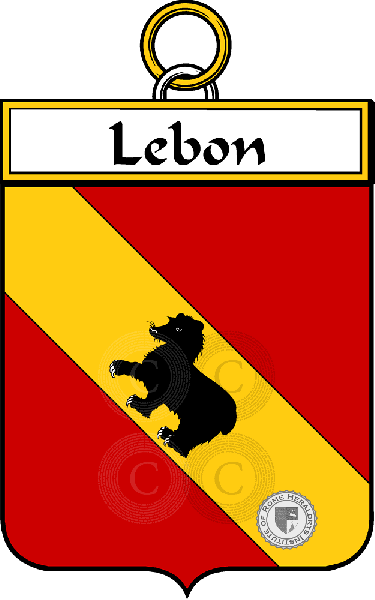The Le History of the Le Bon Surname
Gather ’round, ye history buffs and music lovers because here’s your chance to learn everything you’ve ever wanted to know (or, maybe more than you ever wanted to know), about one of the coolest, most romantic, most James-Bond-baddie names ever to cross your lips – Le Bon. Forget all those Taylors and take a deep dive as we explore “the good” (the bad and the ugly?) of this legendary surname that belongs to that legendary singer who we all know and love.
Origins of the Le Bon Surname
The Le Bon surname has a rich history that spans centuries and continents. It finds its roots in France, where it originated as a descriptive moniker meaning “the good.” That’s because, in those days, names weren’t just labels but reflections of character. In fact, descriptive surnames like Le Bon helped folks stand out in a sea of Le faces. If you were a Le Bon, you were likely the go-to person for sugar and spice and everything nice in your community. It’s likely that the medieval Le Bon family was known as the village’s moral compass and the beacons of righteousness. It’s unlikely that any of those early Le Bons ever showed up wearing skin-tight pink leopard-print britches.
According to genealogical records, the earliest instances of the Le Bon surname can be traced back to regions in France such as Normandy and Brittany. These areas were known for their distinct cultural identities and languages, which influenced the development of surnames like Le Bon.

The Le Bon Name Goes Global
As French history unfolded, the Le Bon surname embarked on its own journey beyond the borders of its homeland. Through a mix of migration, trade, and conquest, the surname found new homes across Europe and beyond, adapting along the way to the linguistic flavors of different regions. Variations of the surname, such as “Le bein,” “Lebone” or “Lebonski,” may have emerged as the surname adapted to different linguistic and cultural contexts. Is Simon Le Bon, in fact, a distance relative of The Dude himself, the Big Lebowski? Maybe.
Just like our favorite jet-setting lead singer, the Le Bon surname was the ultimate traveler, hopping from one linguistic train to another. Its adaptability wasn’t just a survival tactic; it was a testament to the surname’s resilience in the face of cultural diversity. Whether in the bustling streets of Paris or the quiet villages of Eastern Europe, the Le Bon name found a way to make itself at Le Home.
From ‘Lee Bon’ to ‘Leh Bawn’
Pronunciation has also played a role in the evolution of the Le Bon surname. As the surname spread to different regions and languages, it underwent phonetic changes to align with local speech patterns. For example, in English-speaking countries, the pronunciation of “Le Bon” may differ from its original French pronunciation, reflecting the influence of English phonetics. In English-speaking countries, the pronunciation of “Le Bon” may differ from its original French pronunciation. The English language’s influence has led to variations such as “Lee Bon” or “Leh Bawn,” reflecting the tendency to simplify and Anglicize pronunciation. This shift highlights the impact of English phonetics on the pronunciation of foreign names.
In regions where French is spoken, such as France or parts of Canada, the pronunciation of “Le Bon” remains closer to its original form. The French pronunciation emphasizes the nasal “on” sound, creating a distinct and melodic pronunciation that is unique to the French language. Interestingly, in some regions where the Le Bon surname has been adopted, such as parts of Eastern Europe, the pronunciation may have undergone further changes to align with local phonetic rules. For example, in countries like Poland or Russia, the pronunciation of “Le Bon” may be adapted to fit the respective language’s sound system, resulting in variations like “Lebonov.” In America, Le Bon became La Bon, Lebon, and Libon.
Notable Le Bons

Le Bon, La Brute, Le Truant (The Good, The Bad, The Ugly)
Obviously, us Duranies agree that Simon is the most famous of all the Le Bons, but he’s not the only one.
Throughout history, individuals bearing the Le Bon surname have made significant contributions to various fields, leaving a lasting impact on the world. While their achievements may vary, these semi-famous Le Bons share a common heritage that ties them together, sparking curiosity about potential familial connections.
In the world of art, French painter and sculptor Charles Le Bon gained recognition for his works that captured the essence of his time. His artistic vision and creative expression have left a lasting legacy, demonstrating the artistic prowess of the Le Bon name. On the scientific front, Marie Le Bon, a pioneering researcher in the field of genetics, made groundbreaking discoveries that revolutionized our understanding of heredity. Her work laid the foundation for future advancements in the field, highlighting the intellectual prowess of the Le Bon lineage. In politics, Jacques Le Bon, a prominent diplomat and statesman, played a key role in shaping international relations during a critical period in history. His diplomatic efforts and strategic vision have earned him a place in the annals of political history, showcasing the diplomatic acumen of the Le Bon family.
Philip III, known as Philip the Good, was Duke of Burgundy from 1419 to 1467. He was a pivotal figure in the history of Burgundy and Europe during the late Middle Ages. Philip’s epithet, “the Good,” reflects his reputation as a wise and just ruler, as well as his patronage of the arts and culture.

Philip III or Philip the Good (“Le Bon”) was a supporter of artists, writers, and musicians, and created a vibrant cultural scene at his court in Burgundy. This patronage contributed to the development of the Burgundian School of music and the flourishing of the arts in the region.
Sounds like a distant Simon Le Bon relative to us!
While he is not directly associated with the surname Le Bon, his epithet “the Good” aligns with the meaning of the surname. Philip’s rule was marked by significant territorial expansion and political maneuvering. He inherited a complex political situation, with ongoing conflicts between the Burgundian territories and the French crown. Through a combination of military conquests, strategic marriages, and alliances, Philip expanded Burgundy’s territories to include Flanders, Brabant, and Holland, making it one of the wealthiest and most powerful states in Europe. Philip’s patronage of the arts and culture was also noteworthy.
Was our Charlie related to any of these notable Le Bons? It’s hard to say without an Ancestry subscription but in 1692, Stepn Le Bon was the big man around London and could be a cousin. And Johannis Le Bon was a wealthy property owner who was known far and wide around England. He left a last will and testament with the Prerogative Court of Canterbury Wills in 1384-1858. The Prerogative Court of Canterbury (PCC) was a superior ecclesiastical court for the province of Canterbury, which covered roughly the southern half of England and Wales. It had jurisdiction over probate matters, including the proving of wills, and was considered the highest church court in the land. Wills proved in the PCC are often of great genealogical value, as they can provide details about family relationships, property ownership, and social status. These records are particularly useful for tracing ancestors who were relatively wealthy or had property in multiple jurisdictions.
The PCC was abolished in 1858 when civil probate jurisdiction was transferred to the state, but its records are still kept by The National Archives in England.
The Most Famous of All the Le Bons

Simon Le Bon‘s family heritage can be traced back to France, where his ancestors likely originated. They were of Huguenot descent.
His parents, John and Ann-Marie Le Bon, instilled in him a love for music and performance, which ultimately led to his successful career in the music industry.
Simon’s own children, Saffron, Amber, and Tallulah Le Bon, have also followed in his footsteps, pursuing careers in music and fashion, ensuring that the Le Bon name continues to be associated with creativity and talent.
Simon also has two brothers, David and Jonathan Le Bon.
Hello Huguenots
Simon’s family hailed from the Huguenots who were French Protestants and part of the Reformed Church that emerged in France during the 16th and 17th centuries. The term “Huguenot” was originally used derogatorily to describe these Protestants, but it later became the accepted term for them. Huguenots faced persecution in France due to their religious beliefs, which led to a series of religious conflicts known as the French Wars of Religion. The St. Bartholomew’s Day massacre in 1572, where thousands of Huguenots were killed, was one of the most notorious events of this period. Due to ongoing persecution, many Huguenots fled France in the 16th, 17th, and 18th centuries, seeking refuge in Protestant countries such as England, Switzerland, the Netherlands, and later, America. They brought with them valuable skills and crafts, including weaving, watchmaking, and printing, which contributed to the economic and cultural development of their new homelands.
Today, many people of Huguenot descent can be found in countries around the world, including the United States, the United Kingdom, South Africa, and Australia. Huguenot surnames and cultural influences can still be seen in these countries, serving as a reminder of their ancestors’ struggles and contributions.
Le Bon Characters and Brands
- Le Bon The Lion – A children’s book character known for his bravery and kindness. (Aww, Simon, that’s YOU!)
- Le Bon Cheese – A gourmet cheese brand known for its rich and flavorful varieties.
- Le Bon Bistro – A fictional restaurant or food brand specializing in French cuisine.
- Le Bon Chic – A fashion brand known for its stylish and elegant clothing.
- Le Bon Voyage – A travel agency or tour operator specializing in luxury travel experiences.
- Le Bon Ami – A personal care brand offering luxurious skincare products.
- Le Bon Nectar – A brand of premium honey known for its exceptional quality and taste.
- Le Bon Marché: A famous department store in Paris, France, known for its luxury goods and high-end shopping experience. It is one of the oldest department stores in the world, founded in 1852.
- Le Bon Ton: A popular restaurant and bar in Melbourne, Australia, known for its Southern-inspired cuisine and live music.
- Le Bon Choix: A chain of French-inspired patisseries and cafes in Australia, offering a range of pastries, cakes, and coffee.
- Le Bon Crubeen: A restaurant in Dublin, Ireland, specializing in modern Irish cuisine with a French twist.
- Le Bon Vin: A wine shop in Bordeaux, France.
- Le Bon Pain: A bakery chain in South Korea, offering a variety of bread and pastries.
- Le Bon Vivant: A restaurant in Edinburgh, Scotland, known for its contemporary Scottish cuisine and relaxed atmosphere.
Le Bon References in Pop Culture
- In the TV show “Friends,” Joey Tribbiani’s character auditions for a role in a movie called “Mac and C.H.E.E.S.E.” where he plays Detective Le Bon, a French detective with a robot partner.
- In the movie “Austin Powers: International Man of Mystery,” Dr. Evil’s henchman, Random Task, is a parody of the character Oddjob from the James Bond film “Goldfinger.” Random Task’s real name is revealed to be “Random Le Bon.”
- In the book “The Da Vinci Code” by Dan Brown, one of the characters, Jacques Saunière, leaves a series of clues using the works of Leonardo da Vinci. Saunière’s name is a reference to the French painter Jacques Le Bon, who was a contemporary of da Vinci.
- Jean-Baptiste Le Bon: A character from Émile Zola’s “Germinal,” which is part of Zola’s 20-volume series Les Rougon-Macquart. Jean-Baptiste Le Bon is a miner involved in the labor strike central to the novel’s plot.
- “Le Bon Dieu” by Edith Piaf: This classic French song by the legendary Edith Piaf speaks to themes of goodness and divine grace, with “Le Bon Dieu” translating to “The Good Lord.”
- Don’t forget about Simon Le Bon Fan Fiction…
Places or Towns Named Le Bon
- Le Bon Marché: While not a town, this famous department store in Paris, France, is an iconic location and part of the city’s cultural heritage.
- Le Bon’s Bay: Located on Banks Peninsula in New Zealand, Le Bon’s Bay is a small settlement known for its beautiful beach and rural charm.
- Le Bonheur: Though not “Le Bon” exactly, the name is close and often referenced in French-speaking regions. Le Bonheur is French for “happiness” and is used in various place names and institutions, including Le Bonheur Children’s Hospital in Memphis, Tennessee.
Additional Resources
For further reading on the history of surnames and genealogy, we recommend exploring reputable sources such as Ancestry.com, FamilySearch.org, and the International Society of Genetic Genealogy. These resources offer valuable insights into the world of surnames and the stories they tell.
Citations and Sources
- Hanks, Patrick, et al. The Oxford Dictionary of Family Names in Britain and Ireland. Oxford University Press, 2016.
- Cottle, Basil. The Penguin Dictionary of Surnames. Penguin Books, 1967.
- Smith, Elsdon C. American Surnames. Genealogical Publishing Com, 1997.
- Harrison, Henry. Surnames of the United Kingdom: A Concise Etymological Dictionary. Genealogical Publishing Co., 1969.
- Reaney, Percy H., and Richard Middlewood Wilson. A Dictionary of English Surnames. Routledge, 1997.
- “Huguenot Society of Great Britain and Ireland” – The society’s website provides extensive information on Huguenot history, including articles, resources, and links to further reading: Huguenot Society
- “The National Huguenot Society” – The society’s website provides resources for those interested in tracing their Huguenot ancestry, as well as information on Huguenot history: National Huguenot Society
- “The Virtual Museum of Protestantism” – This online museum offers a wealth of information on Huguenot history, including articles, timelines, and images: Virtual Museum of Protestantism
- “Philip III, Duke of Burgundy” – Wikipedia, https://en.wikipedia.org/wiki/Philip_the_Good
- Zola, Émile. “Germinal.” First published in 1885.

